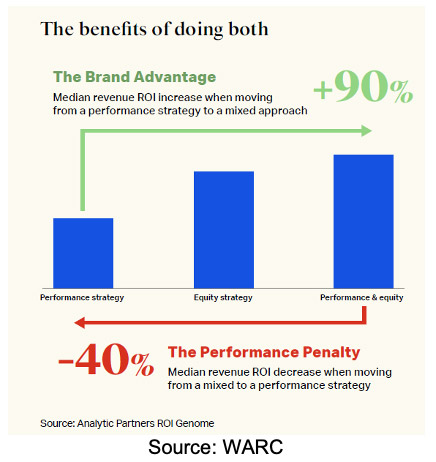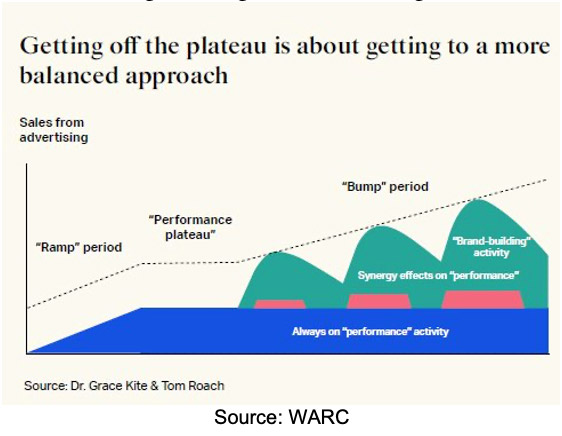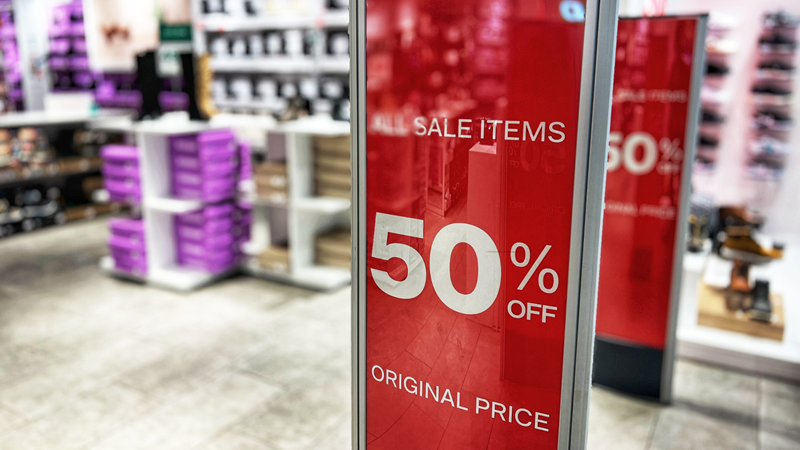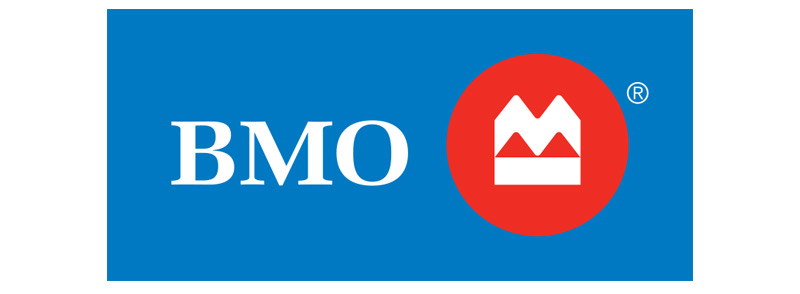Integrating brand and performance for sustainable growth
Over the past decade, the marketing landscape has witnessed a pronounced shift towards performance advertising, driven by its ability to deliver measurable, immediate results. However, recent trends indicate a strategic pivot, with an increasing number of businesses reemphasizing brand as a critical component of their long-term growth strategy.
This shift is underscored by compelling data that reveals a significant re-balancing of priorities. For instance, a recent industry report highlighted that after years of prioritizing short-term metrics, companies that increased their focus on brand building observed a notable improvement in long-term returns, with a more than 90 per cent increase in ROI when moving from pure performance to integrated brand and performance strategies.

Balancing immediate impact with long-term growth
The growth in digital has amplified the appeal of performance marketing because of the direct impact on sales and ability to quickly deliver measurable results. However, this emphasis on short-term gains can cause a ‘performance trap’ and overshadow the critical role of brand building, which cultivates customer loyalty, enhances brand recognition, and strengthens market presence over time.
Brand marketing, by contrast, builds an emotional connection with consumers, fostering loyalty that transcends transactional interactions. This connection is vital for sustaining a competitive edge in a marketplace where consumers are bombarded with choices. Integrating brand building with performance marketing allows businesses to not only drive conversions but also develop a loyal customer base that supports future growth.
Also, when looking at impact, brand recognition significantly impacts performance. As an example, according to research, brand contributes to 30 per cent of all search ad clicks. Beyond direct interactions, another 30 to 60 per cent of outcomes are influenced by factors like seasonality and customer loyalty, revealing that performance metrics may overstate the effects of clickable actions by up to 10 times. This is something brands must consider when looking at investment levels across the funnel based on direct results and attribution.
Canadian brands are increasingly collaborating with their Marketing Mix Modeling (MMM) and data partners to analyze regional baselines and understand geographic differences in performance. These insights help brands assess how short-term and long-term ROI varies across regions, supporting more nuanced decision-making. A campaign that sees strong immediate returns in major urban centers may require a different strategy in rural or less populated areas, where long-term brand building may play a more significant role. By leveraging localized data, brands can better align their investment strategies to regional market dynamics, optimizing both performance and brand equity. Effectively balancing short-term gains, long-term brand equity, and regional dynamics can empower brands to achieve sustainable growth and make more informed marketing investments.

The compelling case for creativity and purpose
Creative innovation is at the heart of effective brand marketing. Campaigns that engage consumers emotionally and offer compelling narratives increase brand recall and deepen customer engagement. By merging creative branding strategies with rigorous performance metrics, marketers can develop campaigns that capture attention and promote lasting connections with the audience.
Highly creative campaigns are shown to deliver four times the business impact of their less creative counterparts. Moreover, purpose-driven brands have been found to achieve greater market penetration and consumer loyalty. Critical metrics that are often overlooked in performance-only strategies.
Investing in high-quality creative can be challenging for brands due to stretched budgets and rising production costs. To address these constraints, many are turning to AI and outsourcing partnerships to streamline development. AI-powered tools have proven effective in reducing costs while improving efficiency. Ultimately, exploring all available options to fuse creativity and purpose enhances brand storytelling, deepens engagement, and drives long-term business success.
Real-world success stories
Companies like Airbnb have demonstrated the power of this integrated approach. Airbnb's strategic shift to focus more on brand rather than performance advertising led to significant results. By reducing dependence on search engine marketing, they increased direct traffic substantially, with 90 per cent of their bookings now coming through direct or unpaid channels.
On the athletic front, Nike, Adidas and Under Armour all had similar journeys that have resulted in a shift back to bringing back brand in a big way in 2024. Nike’s innovative marketing strategies, which often combine cutting-edge product launches with deeply engaging brand stories, have helped maintain its position as a leader in the athletic apparel industry. Similarly, Adidas has shifted its spending ratio to give more weight to brand-building efforts after realizing that an over-reliance on performance marketing was not sustainable in the long term. This adjustment led to improved brand affinity and customer loyalty.
Under Armour’s campaign to redefine its brand amidst fierce competition involved a mix of celebrity endorsements and community-focused initiatives, which helped to elevate its market position. By integrating these efforts with targeted performance ads, Under Armour has successfully increased both immediate sales and long-term brand loyalty among its customer base.
In closing
To adapt to these changes, marketers are moving away from last-click attribution models, which disproportionately credit the final touchpoint preceding a conversion. Instead, advanced multi-touch attribution models are being adopted, offering a more accurate depiction of each channel's contribution to the consumer journey.
The resurgence of brand importance is a response to the limitations of a purely performance-focused approach. By blending the strengths of brand and performance marketing, businesses can engage consumers more deeply and sustainably. As depicted in the illustrative framework, brands can encounter a 'performance plateau,' but this can be overcome through strategic brand-building initiatives.

As we look forward, the successful marketers will be those who can harness the synergistic potential of both, crafting campaigns that not only convert but also build lasting relationships with consumers. Below, we outline key actions and strategies to help futureproof your marketing approach.
Timeframe | Actions and strategies |
|
|
|
|
|
|
|
|
As the pendulum swings back towards brand, it’s clear that the future of marketing will rely on a balanced, integrated strategy that values long-term engagement as much as immediate outcomes. Let's champion strategies that foster not just visibility, but also affinity and loyalty.
Sources:
- WARC: What We Know About Brand and Purpose
- WARC: The Multiplier Effect: A CMO's guide to brand building in the performance era
- WARC: Brand marketing pays off for Airbnb
Authors:
Susan Irving, Kruger Products
Hiran Krishnalingam, Saatchi & Saatchi Canada
Rita Steinberg, FUSE Create



































